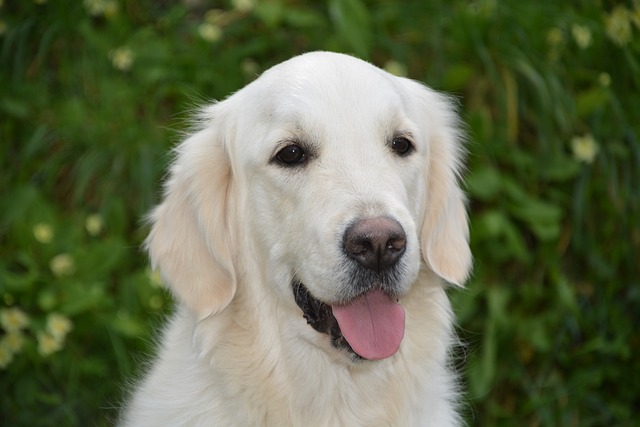
What is glaucoma in a dog?
You might notice your dog squinting more at mealtime or avoiding bright sunlight—these small changes could be early signs of a serious eye condition.
Okay, new pup parent. That frantic clicking sound echoing through your apartment hallway every time your furry friend walks? Or maybe you’ve noticed them slipping more on the hardwood floor? Chances are, it’s time for a nail trim. Don't panic! While it might seem daunting at first, trimming your dog's nails is an essential part of responsible pet care, and with the right approach, it can be surprisingly manageable. Dogs need short nails for healthy posture, comfortable walking, and to prevent painful breaks or ingrown nails. Think of it like keeping your own fingernails tidy – it’s basic comfort and health.
Forget the wrestling match before you even start. The absolute key for beginners? Go slow and make it positive. Grab some super high-value treats (think shredded chicken, tiny cheese cubes, or that special liver paste they go nuts for) and your tools: either guillotine-style clippers or scissor clippers for small/medium dogs, or a grinder (like a Dremel) for larger/thicker nails – grinders are often less prone to quicking but need noise acclimation. Find a quiet, well-lit spot (the kitchen floor after dinner when they’re mellow works great). Begin by simply getting your dog comfortable with you handling their paws. Gently touch a foot, treat. Lift the paw for a second, treat. Do this over several short sessions before bringing the clippers out. Pair the sight of the clippers with treats. Let them sniff the clippers while getting a jackpot reward. This process, called desensitization and counterconditioning, builds positive associations instead of fear.
Ready to trim? Hold the paw firmly but gently. Identify the quick – the pinkish area containing blood vessels and nerves inside the nail. It's easy to see in light-colored nails but nearly invisible in black nails. Crucial tip for beginners: When in doubt, trim tiny amounts off the tip only, cutting at a slight 45-degree angle from underneath the nail. Aim for the "hook." It’s far better to trim too little frequently than risk cutting the quick, which hurts and bleeds (keep styptic powder or cornstarch nearby just in case!). If using a grinder, gently touch the spinning tip to the nail for just a second, then reward heavily. Focus on doing just one or two nails per session initially. Praise calmly and treat after each successful nail, not necessarily during, to avoid jerking movements. If your dog gets stressed, stop immediately and try again later. Patience is non-negotiable.

Here’s the vital cultural and legal context woven into pet ownership here. Force-free, positive reinforcement training isn't just preferred in the US and EU; it's considered best practice and aligns with modern animal welfare standards. Yanking on your dog's leg, yelling, or pinning them down is counterproductive, damages your bond, and can actually be frowned upon or even reported in many communities. Think of building trust, not demanding compliance. Remember your other responsibilities too: keeping your dog’s rabies vaccination up-to-date isn’t just smart, it’s the law across most US states and European countries. And whether you’re navigating the sidewalks of New York City or a park in suburban Ohio, always, always carry poop bags and clean up immediately – it’s basic respect for your neighbors and community ordinances. Keeping nails trimmed is especially important for apartment living; it prevents painful scratches on your floors (hello, security deposit!) and reduces that loud clicking noise that travels through walls. Regular walks are essential, so practice good leash manners – keeping your dog close and respecting others' space makes walks pleasant for everyone.
Struggling after several tries? Don't sweat it! Seeking help is the smart move. Ask your vet for a quick demonstration during your next check-up or schedule a session with a certified force-free groomer. Many offer "happy visits" just for nail trims using positive methods. They have the experience and tools to make it smooth, turning a potential chore into a stress-free routine for both you and your pup. Investing in professional guidance early on builds confidence and ensures you’re providing care that aligns with compassionate, responsible pet ownership valued on both sides of the Atlantic.

You might notice your dog squinting more at mealtime or avoiding bright sunlight—these small changes could be early signs of a serious eye condition.

Let’s set the scene: It’s a sweltering Phoenix afternoon—105°F outside—and you rushed your 2-year-old Lab mix, Cooper, on a quick walk to “get it over with.”

Let’s get real: You’re in your Miami apartment, watching your 3-year-old Corgi, Loki, struggle to climb the stairs to your second-floor unit.

Many dog owners brush off occasional scratching as just “dog behavior,” but persistent itching often signals something more—like a food allergy.

You might first notice your dog scratching more than usual—chewing at their paws until the fur looks thin, or rubbing their face against the couch nonstop.

Let’s be real: You’re standing in your Chicago apartment, watching your 3-year-old Beagle, Max, huff and puff just to climb onto the couch.